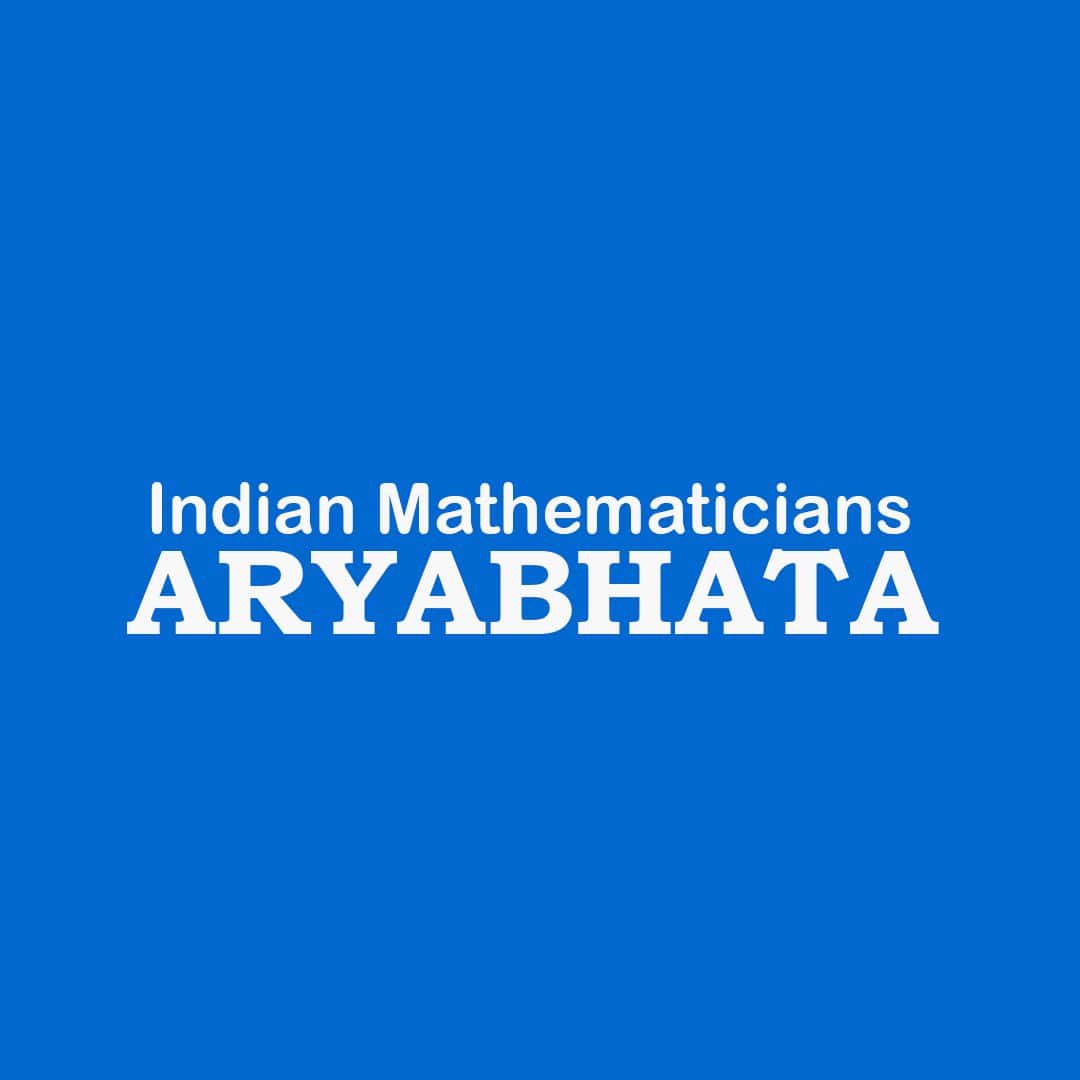

Please enter the code we just sent to whatsapp 91-11-46710500 to proceed
Didn't Receive OTP?

Aryabhata is known for his outstanding contributions to mathematics and astronomy. Many have tried to write about Aryabhata. To completely understand who Aryabhata is, go beyond Aryabhata the Scientist and read about his inventions and philosophies.
Aryabhata is one of the pioneers of India’s introduction to mathematics; perhaps, the earliest. Born around 475 CE in Kusumapura (now Pataliputra) during the Gupta Dynasty, he became a renowned astronomer. His numerous mathematical and astronomical achievements are still recognized today. Although some of his works were lost to history, others that persist push researchers to carry out their investigations even now to further their knowledge. Aryabhata’s groundbreaking work has resulted in the pride of India and the entire history of mathematics that also motivated a host of other scientists towards life-changing studies.
He is called “The Father Of Algebra” because he successfully understood how planets rotate or revolve using algebraic concepts. The value of pi is 3.14 which Aryabhata successfully calculated upto two decimal places. He also uses zero coefficient sometimes but he knows when it is being used in such case. Instead of using Brahmi numbers like most texts then did ,he utilized letters and alphabets that depicted Sanskritic tradition.
There is speculation about Aryabhata’s birthplace and year of birth based on his works and influences. He wrote a book called ‘Aryabhatiya’, which said that he was 23, 3600 years after the start of Kaliyug in 499 AD. This places his birthdate at 476 A.D. The Aryabhatiya was published 3600 years into Kaliyug, but acknowledgement of Aryabhata’s contributions in mathematics came out much later.
Aryabhata should be referred to as Aryabhata I or the Elder because Abu Rayhan al-Biruni, a respected Islamic mathematician implied that there could have been two Aryabhatas who were scientists at one time. Nevertheless, B Datta, in 1926, resolved this contradiction by pointing out that those Al-Biruni credited these works to different scientists were all actually written by one person – Aryabhata.
Pataliputra in Gupta Empire’s Kusumapura was a renowned educational center as well as the hub of communication network. It therefore receives writings from around the world that made it possible for Aryabhata to come up with several mathematical and astronomical breakthroughs. Also, he was supposed to head Kulpa school of Kusumapura himself. Later, he moved further east within Pataliputra studying astronomy at Nalanda University, where rumors swirled that one day, he would become chancellor.
In his only surviving work, Aryabhatiya, he covered a wide range of topics, such as extracting square roots, solving quadratic equations, and predicting eclipses.
Aryabhatiya and Arya-Siddhanta are among the most important works by Aryabhata, where he considered mathematics, astronomy, and correlations on each of his publications. He also explained how mathematical equations applied in astronomy can be used to understand how the universe functions.
This work is sometimes referred to as ‘Aryabhatiyam’ or ‘Arya-status-ash’, meaning 108 verses of Aryabhata’. The text is written as a sutra, which means it bears aphorisms/short statements/principles of science.
These are his set of 13 introductory verses that he used for recalling the laborious calculations easily. There are four “Padas”, the first one being “Gitikapada” having thirteen verses—on cosmology; planetary revolutions are said to last up to 4.32 million years in a “Maha Yuga”.
‘Ganitapada’ is the second ‘Pada’ or chapter. In Sanskrit language, ‘Ganita’ means computations. All its 33 poems talk about mathematics: mensuration, simple(quadratic), indeterminate equations (quadratic), arithmetic and geometric equations.
Aryabhata wrote twenty-five verses to the third Pada in ‘Kalakriya Pada’, which contains calendars and almanacs, weeks and months according to different units of time.
The fourth chapter, ‘Golapada’ has fifty verses. In this chapter, Aryabhata tells everything about days and nights, zodiacs, eclipses, celestial equator, nodes and structure of the globe.
In his book ‘Aryabhatiya’, the author thoroughly explores Indian Mathematical Literature where he compares it with the Hindu technique for finding solutions to mathematical problems from Vedic mathematics up to date. This work deals with Algebra, arithmetics, plane trigonometry and spherical trigonometry thoroughly. He was applying sanskrutik methodology as used in Vedic period.
The works of Aryabhatta had a great influence on ancient Indian astronomy and several other neighboring cultures through meaningful translations.
Aryabhata accurately stated that the Earth rotates on its axis around the sun daily, causing apparent movement of stars due to planet’s rotation. At the time, this statement differed from the belief in a rotating sky that was common. He provided a quantifying definition of heliocentrism as axial rotation planets round the sun.
His astronomical findings are basically divided into four categories. These include descriptions about planetary motions, solar eclipses, sidereal periods; and Heliocentrism.
Aryabhata’s proposition was that the world rotates around its axis in a day. It is the earth’s motion that causes the relative motion of stars. In Aryabhatiyam, he mentions the number of times earth revolves around its own axis during a yuga at the very beginning.
To explain this, Aryabhata created a geometrical model of the solar system in which both the Moon and Sun move on epicycles – circles upon circles. He controlled how planets move in this model through two epicycles—the smaller one moved slowly, but the larger one quickly.
The following were ranked as being closest to Earth by Aryabhata: The moon, Mercury, Venus, sun, Mars, Jupiter, Saturn and asterisms (group of stars). Estimated periods and positions of these planets were found by their relative velocities with respect to points.
Venus and Mercury moved round about as fast as did Sun when they went along with Earth. However, Jupiter; Saturn and Mars are fixed stars or points whose movements are subject to unchanging velocities since each planet passes through one full zodiac first.
Aryabhata used scientific methods to explain lunar and solar eclipses. He suggested that reflected sunlight had created the planets and moonshine. In his words, eclipses were dark areas on Earth.
An example is a lunar eclipse when the sun rays are intercepted by the earth hence casting a shadow on its surface. Then, he calculated the width of the earth’s shadow before determining its size during an eclipse. Aryabhata’s experiments laid the foundation for Indian astronomers who improved their computation techniques.
In our current time units, Aryabhata worked out that it takes 23 hours, 56 minutes and 4.1 seconds for sidereal rotation (the rotation of the Earth with respect to stars). The present time is written as 23:56:4.091.
He presented a cosmology theory that states that the Earth turns on its axis. His theory also incorporated corrections for mean speeds of the planets about the Sun. The calculations he made were based on heliocentrism, which posits that all planets and earth revolve around the Sun at the center of universe.
Aryabhata proposed a geocentric model of solar system, which scientifically explained both lunar and solar eclipses. Moreover, he calculated 365 days 6 hours 12 minutes and 30 seconds as the length of a year; this is just three minutes twenty seconds more than presently recorded.
When Aryabhata died, he was an accomplished mathematician, astronomer, and scientist aged seventy four years. Yet there is no information concerning exact place or time of his death. He was believed to have spent most part of his life at Kusumapura, Pataliputra.
Aryabhata’s impact is genuinely incomparable, and no one has ever been able to reproduce his key accomplishments at a world-class level that still matter today. His forward planning was remarkable.
Aryabhata had a great influence on Indian astrology and others civilizations as well. Other scientists benefited from translations of his researches, explorations and calculations in many languages.
Especially influential among them were Arab translations. The prominent Arabian mathematicians like Al-Biruni and Al-Khawarizmi referred to his works, especially the theory of Earth rotating on its axis which he advanced.
Aryabhata conceived the idea of cosines, sines, inverse sines and vice-sines . Among the first things for Aryabhata was to calculate sine tables (in 3¾ degrees) in four decimal places up to 90 degrees together with versine (1-cosx).
From these ideas, Aryabhata derived Indian names for trigonometric functions such as sine and cosine through Sanskrit words ‘Jya’ and ‘Kojya’. Other astronomers also highly liked his astrological calculation skills often used by them in the creation of Arabic astrological tables known as “zijes”.
In addition, this prompted the Hindu calendar ‘Panchgram’ in India. Later, a group of Islamic scholars built on this to produce the Islamic Jalali Calendar in 1073 CE. Presently, Afghanistan and Iran still use modified versions of this calendar.
Moreover, the Bihar government established an institution called Aryabhata Knowledge University to perpetuate astronomical knowledge among interested students and identify Aryabhata for his contributions.
A scientist’s contributions have never been the same since Aryabhata. He brought India to the world’s attention in terms of scientific knowledge and worth that made a difference around the globe.
Aryabhata was one of the rare scientists who performed unusual duties throughout their life. India appreciates his contributions.
The Islamic world greatly admired Aryabhata’s work, particularly his astronomical findings. Translators rendered these works into Arabic in the eighth century. As a tribute, India named its first satellite launched into orbit after him.
He was the first Indian mathematician and astronomer during the classical period. Being able to estimate and approximate his discoveries at the time, in the absence of modern technology, was astonishing and hence he is also called the father of mathematics of India
Alpha Math offers a game-based learning experience with a unique four-step approach to mastering every concept in math. Schedule a Free Class Now